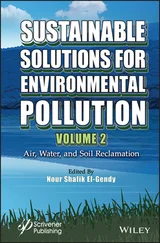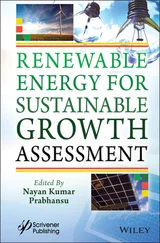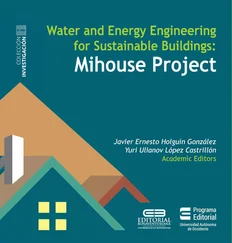Rhamnose and 3‐hydroxy fatty acids containing glycolipid surfactant have been produced by Pseudomonas sp. [52]. As shown in Figure 4.3, one or two molecules of rhamnose are linked to one or two molecules of hydroxyl decanoic acid and represent the basic structure of rhamnolipids. Pseudomonas aeruginosa and Burkholderia sp. play a key role in the production of rhamnolipids and are identified as one of the most effective surfactants in the remediation of hydrodrophobic compounds from contaminated soils [53].
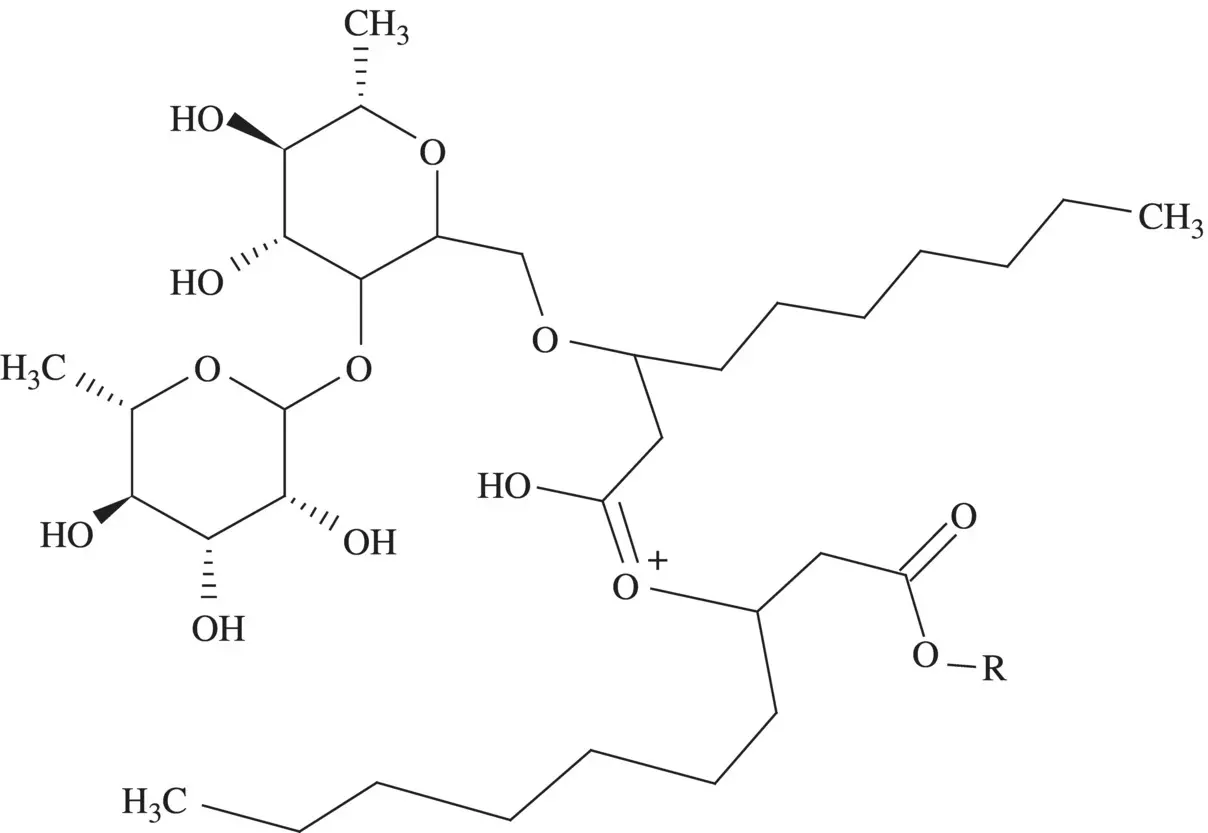
Figure 4.3 Structure of dirhamnolipid.
Torulopsis sp., mainly T. bombicola and T. apicola , are the main strains involved in the production of sophorolipids. Asmer et al. [54] proposed the chemical composition of sophorolipids as the dimeric carbohydrate sophorose and long chain hydroxyl fatty acids, linked by a β‐glycosidic bond ( Figure 4.4).
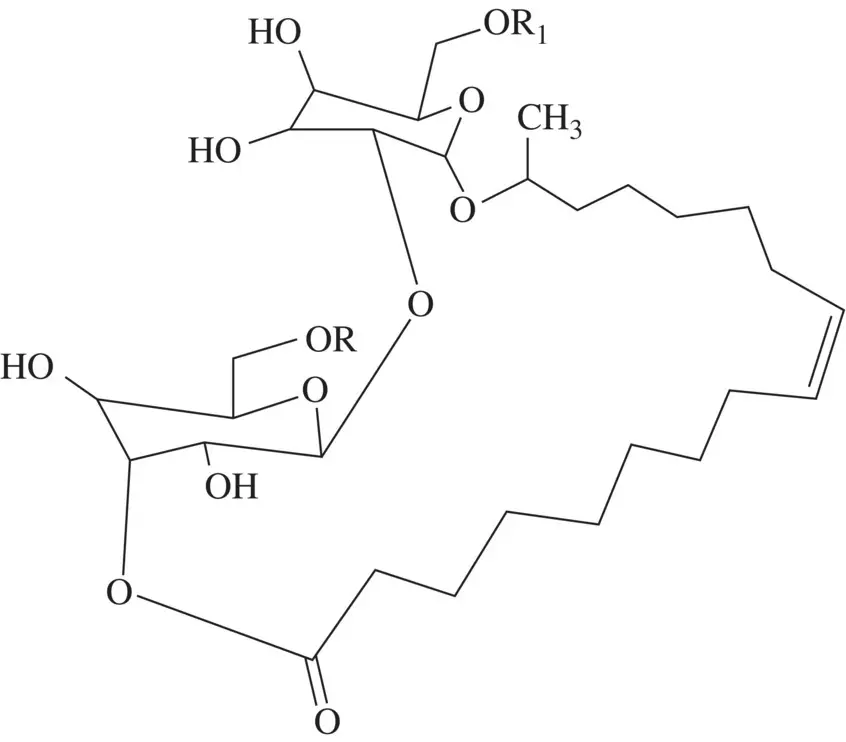
Figure 4.4 Structure of sophorolipids.
Trehalolipids is another important biosurfactant of glycolipid nature. Many members of the genus Mycobacterium show the presence of the serpentine group because of the presence of trehalose esters on their cell surface. Disaccharide trehalose linked at C‐6 and C‐6 to mycolic acid is associated with most species of Mycobacterium , Norcadia , and Corynebacterium . The trehalolipids have a complex chemical composition and possess the ability to alter the size and structure of their mycolic corrosive ends. They often occur in the form of a complex mixture whose composition varies depending on the strain physiology and growth condition.
Bacillus subtilis produces the most potential biosurfactant, i.e. surfactin is a complex mixture of different amino acids and fatty acid chain that bind with each other through a lactone linkage ( Figure 4.5). The reduction in surface tension and interfacial tension of the water molecules occurs in the presence of surfactin. Surfactin has the potential to inactivate herpes and retroviruses.

Figure 4.5 Structure of surfactin.
4.6.6 Lipopeptides and Lipoproteins
According to Rosenberg and Ron [46], these structures consist of lipid molecules in attachment with a polypeptide chain. Antimicrobial action has been shown by many of the biosurfactants against various bacteria, algae, fungi, and viruses. The antifungal and antibacterial property of the lipopeptide, iturin, produced by B. subtilis have been reported by Besson et al. [55] and Singh and Cameotra [13], respectively. A study conducted by Nitschke and Pastore [56] shows lipopeptide activity even after autoclaving between pH 5 and 11 and with a shelf life of six months at −18 °C.
4.6.7 Fatty Acids, Phospholipids, and Neutral Lipids
Huge amounts of unsaturated fats and phospholipid surfactants have been produced by microbes and yeast. For therapeutic applications, these classes of biosurfactants have the utmost importance. The major cause for the respiration failure in prematurely born children is chiefly due to the deficiency of phospholipid protein complex [57].
4.6.8 Polymeric Biosurfactant
The best‐studied polymeric biosurfactants are emulsan, liposan, mannoprotein, and polysaccharide–protein complexes [26]. For hydrocarbons in water, even at a concentration as low as 0.001–0.01%, emulsan works as a very effective emulsifying agent. With a composition of 83% carbohydrate and 17% protein, liposan behaves as an extracellular water‐soluble emulsifier. Mannoproteins, which contain 44% amnnose and 17% protein, are produced in large quantity by Saccharomyces cerevisiae . For oil spills, organic solvents, and alkanes, these mannoproteins show excellent emulsifying activity.
4.6.9 Particulate Biosurfactants
An essential fragment for the remediation of alkanes by microbes is microemulsion, consisting of extracellular film vesicle segments of hydrocarbon. Protein, phospholipids, and lipopolysaccharides are the key components of vesicles formed by Acinetobacter sp. that have a thickness of 1.158 cg/cm 3and 20–50 nm diameter.
4.7 Factors Influencing Biosurfactants Production
Biosurfactant production and their chemical compositions are influenced by a number of factors. Environmental conditions (temperature, pH, air circulation, divalent cation, and saltiness) as well as the nature of the available energy source in the form of carbon and nitrogen, reaction media composition, and limited nutrient supply have a powerful impact on synthesized biosurfactants.
4.7.1 Environmental Factors
The biosurfactants production is either enhanced or inhibited by the reaction conditions. Therefore, for the large‐scale production of the desired biosurfactants, it is important to constantly upgrade the bioprocess as the item might be influenced by changes in reaction conditions, i.e. temperature, pH, air circulation, or unsettling speed. Most of the synthesized biosurfactants provide their best performance in a temperature range of 25–300 °C. A change in the biosurfactant composition can occur during temperature variations. Zinjarde and Pant [58] in their study on Yarrowia lipolytica illustrated the best biosurfactant production at pH 8.0, i.e. at regular ocean water pH, which is also the natural surrounding pH of Y. lipolytica . Rhamnolipid production by Pseudomonas sp. occurred at its most extreme pH (6–6.5) and decreases above pH 7.
4.7.2 Carbon and Nitrogen Sources for Biosurfactant Production
Scientists have used various carbon compounds as fundamental substrates and energy sources for the production of biosurfactants. The substrate composition, i.e. carbon and nitrogen source, influences the biosurfactant type, quality, and quantity [59]. Ilori et al. [60] in their study identify glucose, sucrose, glycerol, diesel, and raw petroleum as good sources of carbon for biosurfactant production. A nitrogen source is also very crucial for biosurfactant production. Medium containing nitrogen sources fulfills the basic requirement of multiplication and development of biosurfactant‐producing microorganisms for protein and chemical blends. Some of the distinctive sources of nitrogen used for biosurfactant production are ammonium sulfate, ammonium nitrate, sodium nitrate, meat concentrates, and malt extricate, etc.
4.8 Strategies for Commercial Biosurfactant Production
The high production cost, low yield, and sophisticated product recovery restricts widespread application of biosurfactants as compared to chemical surfactants. The inefficient bioprocess engineering, usage of a cost–credit substrate, and poor strain improvement are some of the major drawbacks behind high production costs of biosurfactants. For commercial applications of biosurfactants in various fields, these stated drawbacks should be solved. Therefore, the net economic gain between the production cost and application benefit will govern the future of biosurfactants. For large‐scale industrial production and applications, the links between the production parameters of these molecules, their structure and their functions, need to be optimized. The following proposed strategy can smooth cost‐effective biosurfactant production and application.
Читать дальше





